RECAP: Planning Commission Meeting, June 25, 2025
Ofland Resort gets full approval from the Planning Commission despite doubt among commissioners and public; next steps are in front of City Council

On Wednesday, June 25, Morongo Basin residents packed City Hall for a special meeting of the Twentynine Palms Planning Commission for a public hearing on the proposed Ofland Resort. Four of five Planning Commissioners were present, with Commissioner Alex Garcia out with an excused absence. Our agenda preview of the meeting is available here and video footage of the meeting can be viewed on Youtube.
In total, 66 statements were submitted on the Ofland project prior to the meeting, and by the end of the night, 40 people had registered to speak at the podium, though not all stayed around to do so.
After three hours of public comment and Commissioner deliberation, the Ofland Resort Mitigated Negative Declaration (MND), including the necessary development code amendments and zoning changes, made the extraordinary feat of passing the Planning Commission Wednesday night. (What’s an MND? We took a close look here.)
Ofland Introduces Itself to the City
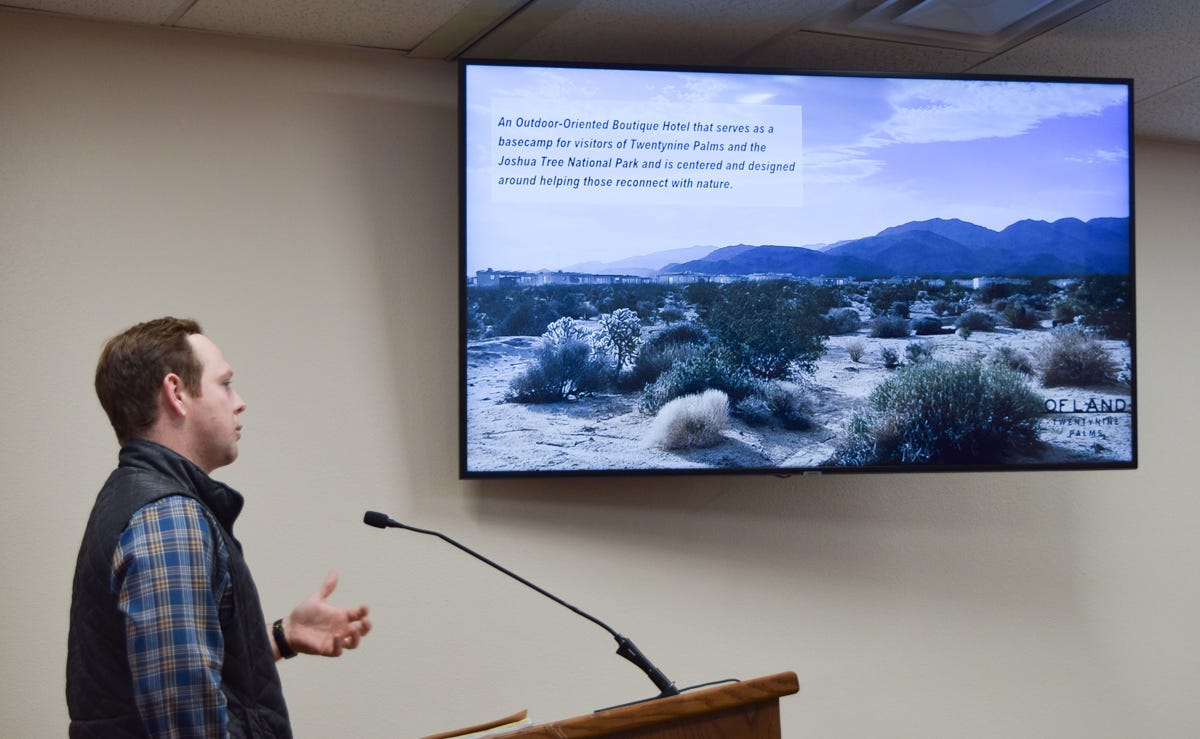
Chair Jessica Cure launched the public hearing by informing attendees that due to the large number of speakers signed up, public comments would be limited to two minutes each instead of the typical three minutes. Attendees protested, having prepped statements based on the City’s usual three-minute public comment length. Present for the meeting was Assistant City Attorney Jennifer Farrell, who affirmed the Chair’s legal authority to modify the speaking time.
Community Development Director Keith Gardner gave an overview of the Conditional Use Permit (CUP) requested by Ofland for their proposed glamping resort in Indian Cove, which includes rezoning the parcel from residential (RS-E) to Commercial Tourist (CT). He also described the creation of a new zoning category to be called Open Space Conservation (OS-C). Luke Searcy, Ofland’s Director of Development, made a quick presentation on the “outdoor-oriented boutique hotel” and its design and read rave reviews about Ofland’s only other resort in Escalante, Utah.
Chair Cure opened the floor for initial questions from the Commissioners. Commissioner Jim Krushat asked how Ofland would apply dark sky lighting standards with a nightly outdoor movie screen. Cure questioned the rationale for a MND—which bypasses the need for an Environmental Impact Report (EIR)—and asked if the developers had received “formal comment” from California Department of Fish & Wildlife or U.S. Fish & Wildlife Service regarding the “biological mitigation.” On behalf of Ofland’s developers, Nicole Criste, Vice President of TerraNova Planning & Research Inc., was present at the meeting to answer Commissioner questions on the project’s California Environmental Quality Act (CEQA) process. Criste stated that neither organization is the approval authority for the MND.
Chair Cure continued a line of questions on desert tortoise mitigation measures, hydrology and water use studies, light pollution, the proposed entrance for the property, and the shape of the open-space conservation corridor.
Before public comment opened, Commissioner Max Walker posed a question to the packed audience:
Here's a question from me. Would you be opposed to this if this was a developer wanting to come in and develop a 152-acre single family home development?
Public Comment Shows Conflicting Feelings
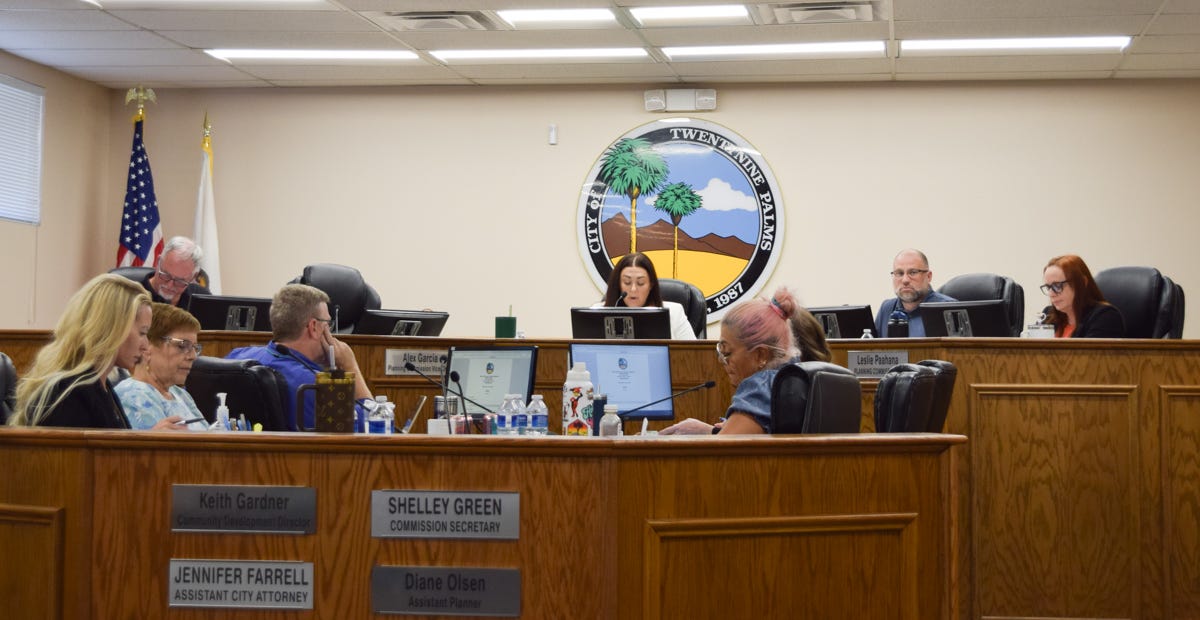
Nine people submitted comment forms saying they wanted to speak in favor of the resort, three people were registered as being neither for or against the project, and 28 people against the project.
During the public comment in favor of Ofland, supporters boosted the resort’s financial benefit to the City. Liz Meyer, former mayor of Twentynine Palms, cautioned about losing the project over increased environmental review:
An EIR would be required only if the impacts would be significant and unavoidable, after mitigation. This is not the case here. Instead, the additional time and expense for the developers to make an EIR would most likely kill this project. Many here are asking for the EIR just for this purpose. This project promises significant economic benefits, and to lose this project would be most regrettable.
Not everyone agreed that an Environmental Impact Report, or EIR, would kill the project. Eric Menendez of the Joshua Tree Gateway Communities Alliance supported the project but was also in favor of it going through an EIR.


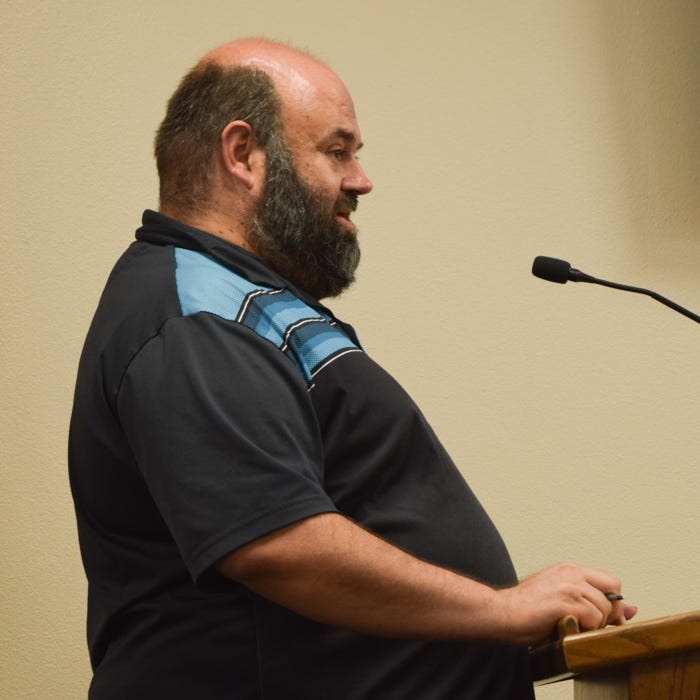
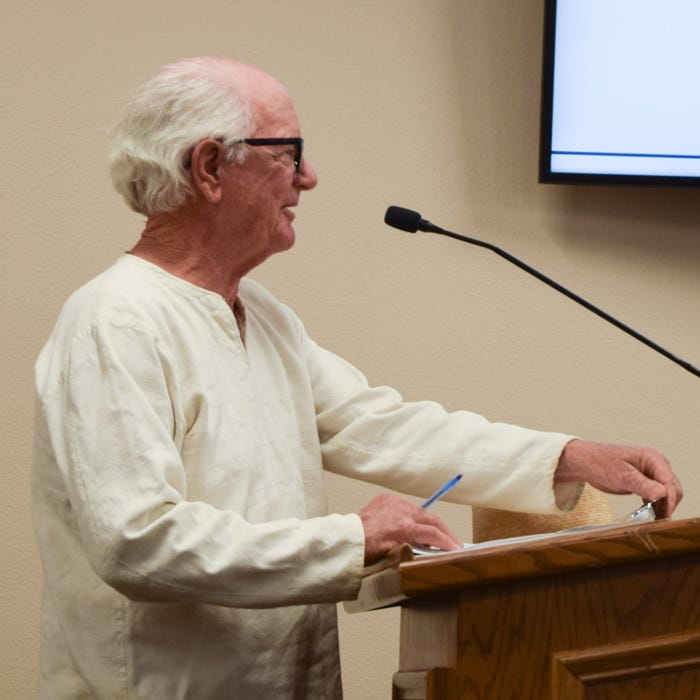
Noting the significant crowd size at City Hall, Menendez and a handful of other speakers called for special meetings such as Wednesday’s to be hosted at a larger venue such as the gymnasium in Freedom Plaza. In the past, the City has hosted official meetings in the multipurpose room at Twentynine Palms High School.
A Southern California real estate broker and part-time resident, Scot Curry, was enthusiastic about the development and didn’t see the rezoning of the property as a problem.
I don't know of any other development where we could get 100 acres of open space. I think it's an absolute gorgeous development… Also, I'm the managing broker of the property on the north side there on 62 and it's 18 acres. It's also zoned residential two and a half. We're never going to see residential two and a half acre homes built on any of those corners. Lear and Highway 62 is a major street. It's going to change over the years.
Steve Bardwell, President of the Morongo Basin Conservation Association, spoke as a neutral commentator on the project, but criticized the effectiveness of the open space conservation proposal. He suggested the resort location be moved further north on the parcel, toward Highway 62.
This project has obviously terrific benefits for the City and its relatively light footprint on the site is admirable. However, the idea—the way the site is planned as a kind of a doughnut with the development in the center of it—it really doesn't work. The attempt to frame this development as an island within conserved land fails by not considering the impact of the “edge effect” on wildlife: Needed access roads, wastewater treatment and stormwater systems that would occur within the conserved land.
Comments against the project expressed similarly complicated feelings as those in favor, but remained clear that the project carried the risk of bringing unintended impacts on the neighborhood of Indian Cove and the community of Twentynine Palms.
Issues raised by speakers included light pollution, problems with an on-site sewage treatment facility, long-term sustainability, job concerns, the need for housing rather than resorts, and the possibility that the project would drive away tourism money from the City’s downtown corridor.
Others were against the project’s Indian Cove location but still in support of the resort concept—some suggested the location for the resort be moved east, closer to Project Phoenix and in a commercially zoned area.
Travis Poston, owner of Campbell Hill Bakery and resident of Indian Cove, said:
This property where the hotel is set to be is zoned as residential. It's not a mistake that it was zoned as residential. I'd like to know what gives our City the right to change that to a commercially zoned property. I'm not trying to be a jerk. I'm just not sure our City Planner, the Planning Commission, is looking out for the community's best interest, or at least the neighborhood's best interest.
Indian Cove resident Ian Raikow called for a full environmental review, saying the project will impact not just Indian Cove but the entire region:
This is a critical time in determining the character of our town, and community growth is good and necessary, but unchecked growth driven by the interests of businesses and corporations that do not understand what makes our City and neighborhoods unique will have a ripple effect on the entire high desert. Towards that end, it is imperative that a full environmental impact report is completed for a project of the scope proposed—a project that is so close to a historic neighborhood that is also developing quickly. It's common sense, a basic, fundamental step, and will be setting a precedent for future projects in 29, Wonder Valley, Joshua Tree, Yucca, and Morongo.
Heidi Heard questioned why the Indian Cove neighborhood gets constantly exploited for tourist development yet receives no benefits in City amenities:
Why is Indian Cove the forgotten stepchild? We don't get any City amenities like a public park, but get projects like Ofland shoved down our throats. During COVID we lost neighbors due to the influx of hotel room VHRs, and now this. We chose to live in a rural neighborhood, not a commercial district. Zoning changes should not be done just because some outside entity wants it. They knew the zoning of that property before they considered purchasing it. If zoning is to be changed in the City, then the whole general plan needs to be opened up and examined.
Zachary Zietz echoed how ill-fitting the resort would be for the residential neighborhood:
I grew up here. I moved here when I was five and graduated high school here. I left, but I've always called this place home. You know, it's hard to say how much I love this neighborhood. I really do. It's a reprieve every time I come back to it, and, man, I would love to keep my home in my family. I'd like to have my kids experience the same neighborhood. You know, to answer your question: The 2.5 acre homes, those would be neighbors. So I just ask that you please do your due diligence and consider the negatives [of] this project, and just don't push it through. Because it feels like we're pushing it through.
Resident MJ Fiocco, retired Senior Transportation Specialist at the U.S. Department of Transportation, cited glaring flaws in the project’s traffic mitigation and noise studies, saying the studies used “sloppy science” by abiding by Federal Transit Administration standards instead of Federal Highway Administration.
Geary Hund, retired biologist for the U.S. Fish & Wildlife service, raised the issue of survey methodology flaws within the MND, saying the project lacks proper protocol without regard to the project’s proximity to golden eagle, desert tortoise habitat, and special status plants.
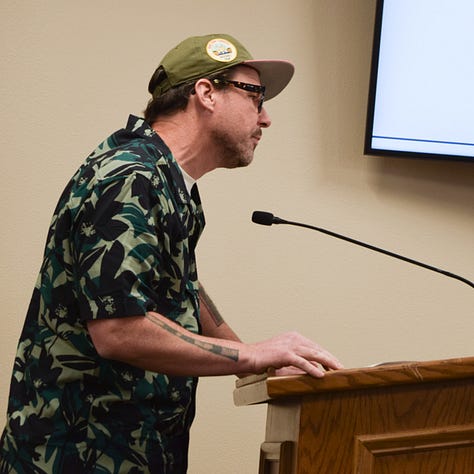
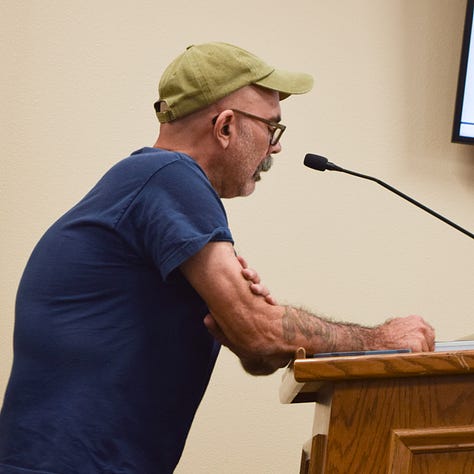


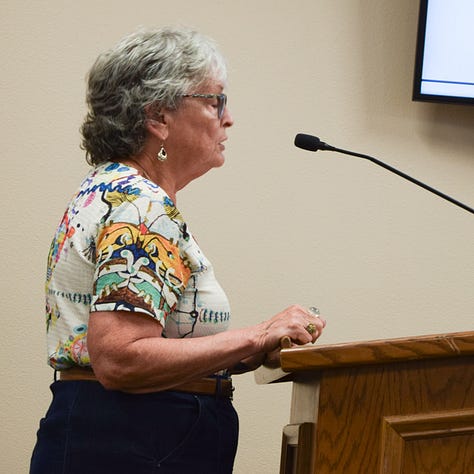
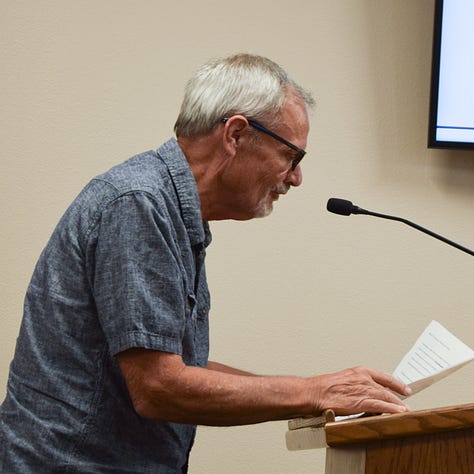

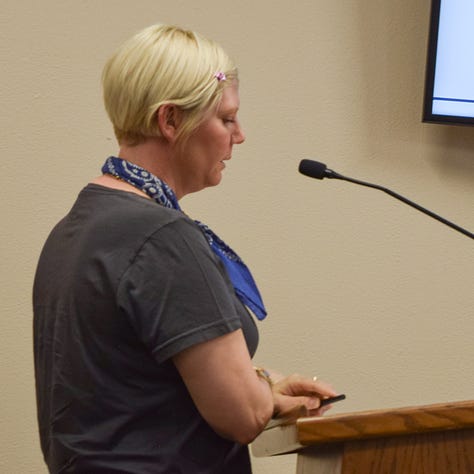
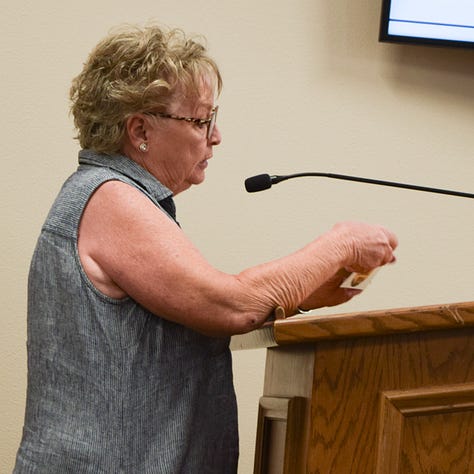
Former public school teacher and small business owner Caileen Brandt raised concerns of the project’s long-term job sustainability:
Throughout my years in the City, friends and colleagues expressed challenges with getting full time work with benefits locally. When I looked into these sustainable jobs, I didn't find much information, but I did see that staff dorms are included in the plan, and that makes me think that Ofland group is planning to bring staff from outside of the Morongo Basin… If that's the case, then they're certainly not offering sustainable jobs, or at least not all of them, to our community members.
One thing is clear amongst those against the project — they want a complete EIR instead of an MND. Locals Xárene Eskander and Caitlin Standish raised issue with the idea of precedent being set in the City in regards to rezoning and general plan amendment policy. Resident Melissa Grisi went so far as to say that an EIR was needed “to address this potential zoning change” itself.
Downtown business owner, Dana Longuevan of Very Very, expressed concern over the project’s impact on local storefronts and restaurants:
With an on site restaurant, gift shop, alcohol, and amenities like a movie theater, pools, games, individual fire pits and event programming on site, what motivation do guests have to get in their cars and leave the property? This does nothing to help the local economy. Just look at their resort in Escalante… The most popular ways into the high desert are I-10 in the west and 247, meaning most visitors never set sight on our town. If this resort is located outside even the sight line of downtown Twentynine we will lose crucial, crucial traffic to the town of Joshua Tree, as visitors have already visually seen and gone through those towns. My business has seen the direct effect of visitors staying at hotels in town. We regularly have guests from the 29 Palms Inn, Ramsey Hotel and the new Reset Hotel. These people had to drive through town to get to their lodging.
Resident Beth Anderson also highlighted the Ofland Escalante location reviews to bolster her opposition:
I read through every customer comment for the one other facility— Ofland Escalante in southern Utah, which is located adjacent to the small town of Escalante. That small town provides access to the Grand Staircase Escalante National Monument, like Joshua Tree and 29 Palms do for Joshua Tree National Park. In their comments, customers raved about the nightly outdoor movies. Customers raved about the various convenient and delicious food offerings. One customer mentioned the bad odor from Ofland’s wastewater treatment system. One customer said, of going into the small town of Escalante, “there's nothing there.”
Commission Deliberates after Listening to Public Comment
After public comment, the commissioners had another chance to ask the developer questions, which reflected concerns raised in public comment. Commissioner Krushat reignited the discussion by introducing himself.
My family's been part of Twentynine Palms since my grandfather got here. So, we've been part of it for 96 years. And I'm pro Twentynine Palms, but I'm pro 28,000 citizens that look upon us to for the economic well-being of our community.
Commissioner Krushat continued by asking City staff if choosing to not undergo further environmental review on the project would put them in violation of California law. Concern about the potential for future litigation over the Commission’s decision was alluded to repeatedly in the Commissioners’ questions throughout the night. Commissioner Walker said:
There was also a lot of commotion brought up regarding some of the surveys maybe not being done to the bar correctly, mainly like the traffic study. And then reading through the packet, I saw a bunch of stuff from several wildlife agencies. How are we ensuring that we're not going to be causing problems and making more issues for us in the in the future?
Chair Cure, alluding to the edge-effect introduced earlier by MBCA President Steve Bardwell, mentioned redesigning the open space conservation designation of the property and inquired whether any sort of community benefits agreement (CBA)1 could be put in place. The developer’s suggestion of pool passes as a community benefit elicited a roar of laughter from the audience.
Chair Cure expressed hesitation,
I don't want to push something through and then in the future, look back and see how it could have been better, like other previous projects. I feel like that has happened, and so I'm not ready to make that decision now based on it exactly the way it is.
To that, Commissioner Krushat immediately replied, “It sounds like you are for the project.”
Cure continued to hesitate and stated five times over the discussion, “I am not ready.” Cure used phrases such as, “I don’t feel like I have clarity on some of the things to make that decision right now.” And, “I think there’s still things that I do not feel 100% on.” And, “I’m not ready to make that decision tonight.” But, the attempt by Krushat to characterize her opinion continued as well. Cure stated,
I would like to push it to another date certain to continue to look at and add these points into it.
Commission Unsure of their Responsibilities, but Forwards Project Anyway
It was soon apparent that the Commissioners had conflicting opinions as to what their responsibility was that night. As the discussion progressed, Director Gardner clarified that the body had two choices:
You either continue it to a date certain, to make sure your concerns are satisfied, or you could pass it tonight, to the City Council with suggested modifications.
The decision to group all approval items together put a lot on the Commission’s plate for a single night. It is unclear why the Community Development Director introduced all five approval items to the Planning Commission as a single agenda item, making discussion of individual components or modifications challenging.
Cure inquired if these amendments and approvals could be passed one a time. Terra Nova representative Criste interjected here—claiming the project in its entirety had to be pushed through—rezoning and all—in one piece, per the CEQA approval process. It should be noted, however, that Criste’s firm is employed by Ofland and their role is to advocate on the developer’s behalf. Desert Trumpet has not verified the accuracy of Criste’s assertion.
On forwarding the project to Council for approval, Commissioner Leslie Paahana stated,
It’s our duty and diligence as a Planning Commission to do all of our checklists and making sure that what is presented is something that has met all these marks.
But Commissioner Krushat was of the opinion that the Planning Commission’s decision was less serious, alluding to City Council when saying, “We’ll leave it to the decision makers.”
Chair Cure doubled down on her concerns regarding the frontage road, zoning of the property, and density of the resort, but after being assured by the other Commissioners that all of her concerns could be addressed through the design process,2 she relented on denying approval to the developers. Commissioner Walker explained the order of operations:
They present us their design, we get to review and comment again, again on the design.
Commissioner Walker motioned to recommend the project as written, which was seconded by Krushat. The motion for approval passed 4-0-1.
Next Steps
The June 25 Planning Commission meeting drew an unprecedented crowd, underscoring the public’s deep investment in the proposed Ofland Resort. After hours of conflicting public testimony, probing questions from Chair Cure and unresolved concerns around environmental review, zoning, and long-term community impact, the Commission voted unanimously to recommend the project to City Council.
Despite visible hesitations from Chair Cure and confusion among Commissioners about their procedural responsibilities, the project was advanced without conditions or consensus on suggested modifications. What comes next is now in the hands of City Council, with key questions left unanswered: Will the Council consider a full Environmental Impact Report? Will a Community Benefits Agreement be negotiated? And how will residents’ concerns, especially from Indian Cove, be meaningfully addressed as the process moves forward?
NOTE: Desert Trumpet staff members Cindy Bernard, Kat Talley-Jones, and Heidi Heard live in the Indian Cove neighborhood, adjacent to this proposed development project, and are on the executive committees of Indian Cove Neighbors and Say No to Ofland.
Leave your thoughts in the comments below. Please note that we do not allow anonymous comments. Please be sure your first and last name is on your profile prior to commenting. Anonymous comments will be deleted.
Feel free to share this article!
Will you help support our work by becoming a paid subscriber today?
A Community Benefits Agreement is a contract between a developer and a city tailored to address and mitigate the specific impacts of a project on a community.
Since the meeting took place, questions have been raised as to the accuracy of Walker’s claim. Desert Trumpet emailed Community Development Director Keith Gardner the day following the meeting to verify whether the items Chair Cure sought to explore can be revisited by Planning after the project is reviewed, and perhaps passed, at City Council. We did not receive a response prior to deadline.




I am a new resident of the area just east of Indian Cove, and attended this meeting. It was disappointing to see how little that neighbors' concerns were considered by the Planning Commission. Those members must become more responsive to the community. I can only hope that City Council will be.
California is in real trouble! Get rid Newsom and bring back property rights of the citizens not big money!